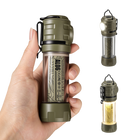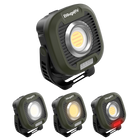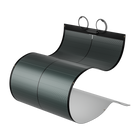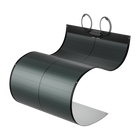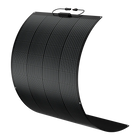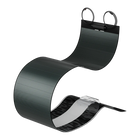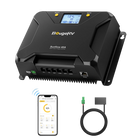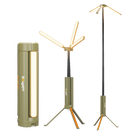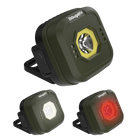Quick and Easy: Convert Watts to Amps in a Snap!


Source: asutpp
Ready to tap into the power of the sun? Let's dive into the electric world of watts, amps, and volts—the key players in your solar power strategy. Whether you're new to the scene or a seasoned solar enthusiast, understanding how to convert watts to amps is crucial for optimizing your system.
In this blog, we will explain how to convert watts to amps, why this conversion is useful, and more to make sure you're well-equipped to harness solar energy with confidence.
So grab your calculator, and let's get started on this electrifying journey to solar proficiency!
Watts to Amps Conversion Calculator
Before we dive into the details, let's start with handy online tools that can help you convert watts to amps in a matter of seconds. All you need to do is enter the wattage and the voltage of your device or appliance, and the calculator will show you how many amps it draws.
The Formula for Converting Watts to Amps
If you're curious about how the calculator works, or if you'd rather work out the numbers on your own, here's how you convert watts into amps:
Amps = Watts / Volts
For example, if you're using a 100-watt light bulb that operates on 120 volts, you can determine the current it draws in amps by dividing the wattage by the voltage. In this case, 100 watts divided by 120 volts equals approximately 0.833 amps.
We can also rearrange the above equation to obtain the following formulae:
Watts = Amps x Volts
Volts = Watts / Amps
Watts to Amps at 120V
|
Power (W) |
Voltage (V) |
Current (A) |
|
100 watts |
120 volts |
0.8333 amps |
|
200 watts |
120 volts |
1.667 amps |
|
300 watts |
120 volts |
2.500 amps |
|
400 watts |
120 volts |
3.333 amps |
|
500 watts |
120 volts |
4.167 amps |
|
2000 watts |
120 volts |
16.667 amps |
|
5000 watts |
120 volts |
41.667 amps |
What Are Amps, Volts, and Watts?
Now that you know how to convert watts to amps, you might be wondering what these units actually mean. Amps, volts, and watts are fundamental electrical units, each representing a different aspect of electricity. Here's a brief overview of each:
-
Amps (amperes) tell us about the electric current flowing through a wire or device. The more amps, the more current. Think of it like the volume of water flowing through a hose every minute; more water signifies a stronger flow, just as more electrons result in more amps.
-
Volts measure the electric potential difference between two points in a circuit, which is like the force pushing the electrons along. Higher voltage equals greater "push" or pressure, similar to how water pressure affects the flow in a hose. In the U.S., standard household outlets usually provide 120 volts of AC power.
RVs often have systems using both 120V AC for household-type appliances when hooked up to a power source or generator, and 12V DC for basic functions powered by batteries, like interior lights and water pumps, allowing them to run off-grid.
-
Watts measure the rate of energy transfer or consumption in a circuit. More watts mean more power. It's akin to the total amount of water that's coming out of your hose. A high-wattage solar panel, for instance, will charge a battery faster because it has more power output.
Understanding these three elements helps you get a handle on how electrical systems work, whether you're plugging in a toaster at home or setting up your RV for a weekend getaway.
So, Why Are Electrical Ratings Important in Solar Power?

Different devices and appliances have various electrical ratings, and you need to match these with your solar power system. Understanding how to convert watts to amps can help you determine how much power your solar system can provide and how much power your devices and appliances need. This way, you can avoid overloading your system or underpowering your devices.
For example, if you want to power a 100-watt light bulb with a 12-volt solar panel, you need to know how many amps it draws from the solar panel. Using the formula Amps = Watts / Volts, you would calculate that it draws approximately 8.33 amps. This tells you that your solar panel needs to output at least 8.33 amps of current at 12 volts to light up that bulb.
However, if you want to power a 100-watt laptop with a 12-volt solar panel, there's an extra layer to consider: the AC/DC conversion. Most household devices and appliances run on AC (alternating current) power, whereas solar panels produce DC (direct current) power. To make them compatible, you need an inverter that converts DC power to AC power.
The problem is that inverters are not 100% efficient — they lose some power during the conversion process. For example, if your inverter has an efficiency of 90%, it means it only converts 90% of the input power as output power. The rest is wasted as heat.
So, if you want to power a 100-watt laptop with a 12-volt solar panel and an inverter that's 90% efficient, you need to know how many watts your solar panel needs to produce. The formula for this is:
Input watts = Output watts / Efficiency
In this case, “input watts” are the watts produced by your solar panel, “output watts are the watts consumed by your laptop, and “efficiency” is the efficiency of your inverter. Plugging in the values gives you:
Input watts = 100 / 0.9= approximately 111.11 watts
This means your solar panel needs to produce at least 111.11 watts at 12 volts to power your laptop.
To work out how many amps your panel should produce, you can use the formula we learned before:
Amps = Watts / Volts
When we crunch these numbers, we get
Amps = 111.11 / 12= approximately 9.26 amps
Accordingly, your solar panel will need to produce at least 9.26 amps at 12 volts to power your laptop.
Best BougeRV’s 12V Lithium Batteries

If you're in the market for the best 12V lithium batteries for your solar setup, BougeRV's selection is definitely worth considering. Our batteries are both high-quality and durable for your solar needs.
Here are some key advantages of using BougeRV's 12V lithium batteries:
-
BougeRV's 12V lithium batteries have a high energy density, meaning they can store more power in a smaller size compared to lead-acid batteries.
-
A low self-discharge rate ensures that they retain their charge for longer than lead-acid batteries.
-
The batteries featured a lengthy lifespan, often exceeding 4000 cycles, which is significantly better than the 300-500 cycles typically offered by lead-acid batteries.
-
BougeRV's 12V lithium batteries can be fully charged in an hour, whereas lead-acid batteries may require 8-10 hours.
-
Work well in both hot and cold environments, unlike lead-acid batteries that can freeze or overheat.
-
Each battery features an integrated Battery Management System (BMS) that safeguards against overcharging, deep discharges, short-circuiting, and excessive heat.
To delve deeper into BougeRV's 12V lithium batteries, please visit our website where you can explore our range of batteries. You can also use BougeRV’s online calculator to determine the number of batteries you'll need for your solar system.
Conclusion
We hope this blog post has shed some light on converting watts to amps and why it's such a crucial step for anyone working with solar power. Keep in mind that each device or appliance comes with its own electrical specifications, and it's essential to make sure these match up with your solar setup. Don't forget to take into account the AC/DC conversion and the efficiency of your inverter, especially if you're planning on running AC devices off of DC power from your solar panels.
On the hunt for top-notch 12V lithium batteries for your solar system? We can't recommend BougeRV enough. BougeRV’s high-quality, durable, and environmentally friendly batteries are just what you need to fulfill your solar power needs. Visit BougeRV.com today and discover the one-stop solar solution for your setup!
FAQs
1. How to Convert Watts to Amps for AC Power?
To convert watts to amps for AC power, you need to know the power factor of your device or appliance. The power factor is a measure of how efficiently the device or appliance uses the AC power. It ranges from 0 to 1, with 1 being the most efficient.
The formula for converting watts to amps for AC power is:
Amps = Watts / (Volts x Power Factor)
For example, if you have a 100-watt TV that operates on 120 volts and has a power factor of 0.8, you can find out how many amps it draws by dividing 100 by (120 x 0.8). The result is 1.04 amps.
2. How Many Watts Are in an Amp?
The formula for converting amps to watts is:
Watts = Amps x Volts
So, if you have a circuit that has a current of 10 amps and a voltage of 12 volts, you can find out how many watts it has by multiplying 10 by 12. The result is 120 watts.
3. What Is 20 Watts in Amps?
To find out what is 20 watts in amps, you need to know the voltage of your circuit. The formula for converting watts to amps is:
Amps = Watts / Volts
For example, if you have a circuit that has a wattage of 20 watts and a voltage of 12 volts, you can find out how many amps it has by dividing 20 watts by 12 volts. The result is 1.67 amps.
4. How Many Amps Are 5000 Watts?
The formula for converting watts to amps is Amps = Watts / Volts. For instance, if you have a circuit that has a wattage of 5000 watts and a voltage of 120 volts, you can find out how many amps it has by dividing 5000 by 120. The result is 41.67 amps.
5. How Many Amps Is 2000W?
Given a resistive load and ideal power factor of 1, a device using 2000 watts would pull approximately 16.67 amps when operating at 120 volts. (2000 watts ÷ 120 volts = 16.67 amps)










